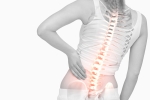Home »
Blog » Health and Wellness
| Stem Cell, PRP, Acupuncture in Queens & Long Island, New York
Health And Wellness | Stem Cell, PRP, Acupuncture in Queens & Long Island, New York
When you purposely bend or twist your neck, either out of nervous habit or for tension relief, you likely notice a cracking, popping, or snapping sound. You may be wondering, can cracking my neck cause arthritis?
You’re Probably Safe - In most cases, neck cracking is completely harmless. The sound you hear is most likely due to tiny gas bubbles that form and pop in the fluid between your synovial joints. This process, as far as we know, causes no damage to your neck.
Read more
Researchers gave patients VR devices to see if it could help make them more comfortable. Virtual reality (VR) is quickly transforming the healthcare industry, changing the way patients and doctors receive and give care. Some pregnant women are experimenting with VR headsets to ease the pains of childbirth. And in 2017, burn victims started using VR gaming to lessen the excruciating pain of having their bandages changed. Now new research from Cedars-Sinai Medical Center supports the growing belief that therapeutic VR can safely and effectively reduce severe pain in hospitalized patients.
Read more
Difficulty sleeping is a common source of frustration that I often hear from patients. While pain often causes insomnia, studies suggest that the reverse may be true as well as not enough sleep can lead to more pain. In fact, some researchers now believe that a good night’s rest can serve as a powerful pain reliever.
Read more
Looking down at your phone, tablet, or laptop can cause ongoing neck pain. When you hold this tilted, head-forward posture for long periods of time, you may develop a repetitive stress injury or muscle strain. This ailment is commonly referred to as a tech neck (sometimes called text neck) and can be avoided by changing a few habits. Here are 5 simple steps you can take to prevent the pain:
Read more
Exercises that help ease lumbar herniated disc pain can be difficult to find especially if you’re looking for ones you don’t have to perform lying on the floor. If you find it more comfortable to stand up or sit in a chair while you exercise, here are 3 beginner-level exercises you can try. Check with your doctor for his or her recommendations first.
Waiter’s Bow - The waiter’s bow is a standing exercise that strengthens the muscles in your buttocks, which makes things easier on your lower back. For support, you can do this exercise with your hands placed on a tall bed or stool in front of you.
Read more
Pain can entirely change our lives. Ongoing pain problems can lead to disabilities like not being able to work, drive, or even maintain a home. Pain in a dominant hand or arm can make it difficult to button a shirt, comb hair, or carry groceries. Low back pain can make it hard to sit, stand, bend, tie shoelaces, or just about anything else you can imagine. Intense, recurring headaches, like migraines, can make it difficult to concentrate, listen, read, eat, or even turn the lights on. This kind of pain – ongoing and significantly interfering with important life activities – is called high-impact chronic pain.
Read more
In some cases of osteoporosis, one or more vertebral bones can become so weak that they cannot fully support their load and develop tiny cracks. This type of fracture, called a vertebral compression fracture, can be painful and sometimes leads to worsening symptoms, such as tingling, numbness, weakness, or spinal deformity (kyphosis). Fortunately, you can take steps to lower your risk for vertebral compression fractures, as well as seek treatment if one occurs.
Read more
Overview - Cannabidiol (CBD) is a type of cannabinoid, a chemical found naturally in cannabis (marijuana and hemp) plants. CBD doesn’t cause the “high” feeling often associated with cannabis. That feeling is caused by tetrahydrocannabinol (THC), a different type of cannabinoid. Some people with chronic pain use topical CBD products, in particular CBD oil, to manage their symptoms.
Read more
When pain is at its worst, we’re tempted to try just about anything to get some relief, including procedures like nerve blocks or injections. But before you jump into a new procedure, you need to understand both the risks and the potential benefits. The world of nerve blocks and spinal injection procedures for treating pain is sometimes referred to as interventional pain management, and it has played a fundamental role in how doctors treat pain for decades. These types of treatments are typically done with special imaging techniques, like live fluoroscopy, and focus on applying local anesthetics and/or cortisone around symptomatic parts of the body, like irritated nerves.
Read more
When upper back pain has lingered or not responded to rest and other self-care methods, a medical professional may be needed to develop a treatment plan that can reduce the pain.
Nonsurgical Medical Care for Upper Back Pain - Some of the more common medical treatments for upper back pain include:
Physical therapy. A physiatrist, physical therapist, or other qualified medical professionals can design a physical therapy program to meet the patient’s specific needs. Most physical therapy programs for upper back pain focus on strengthening and stretching the upper back’s muscles, as well as neck muscles above and core muscles below. Physical therapy starts gradually and typically progresses over a period of a few weeks or months, at which point the patient can switch to a maintenance program at home.
Read more
Love this Post? Spread the World






















